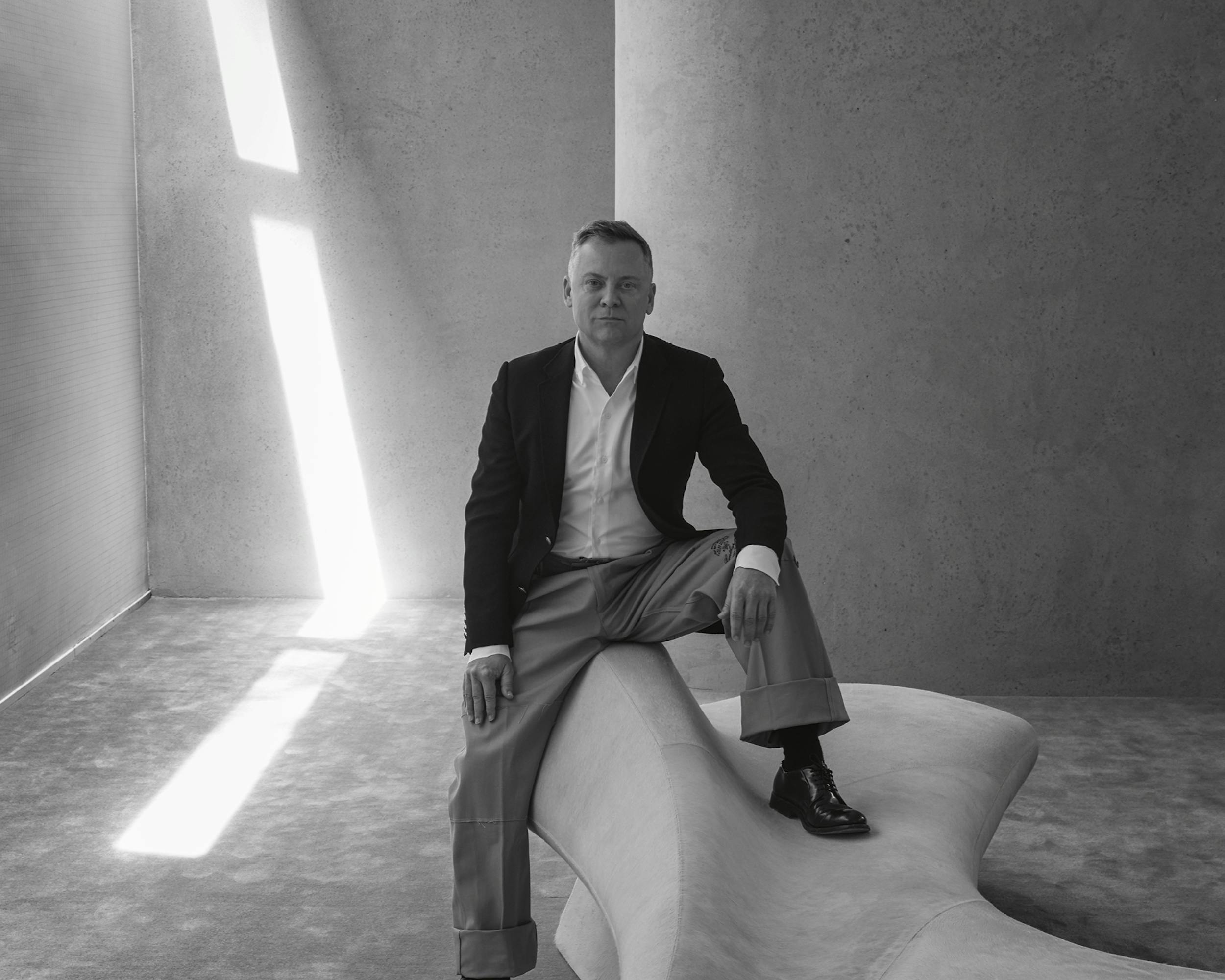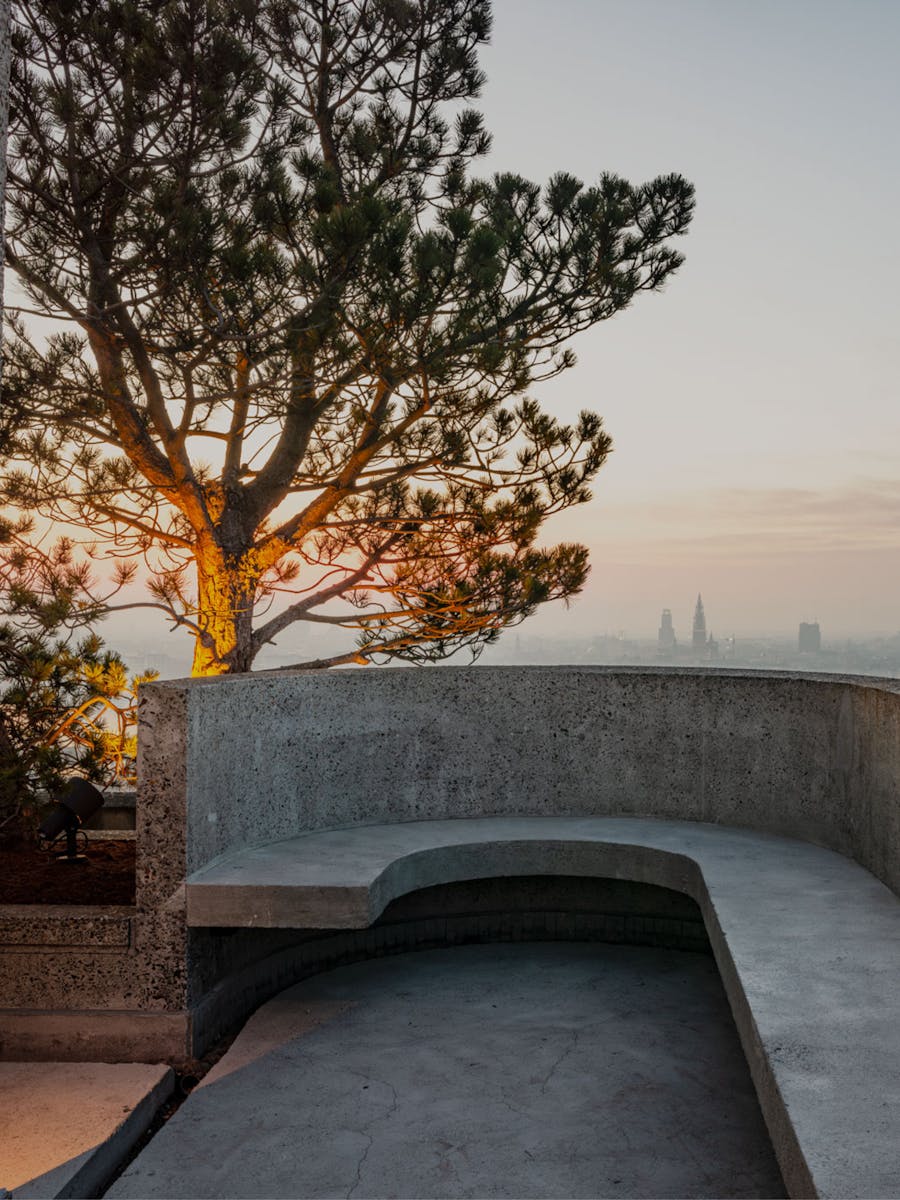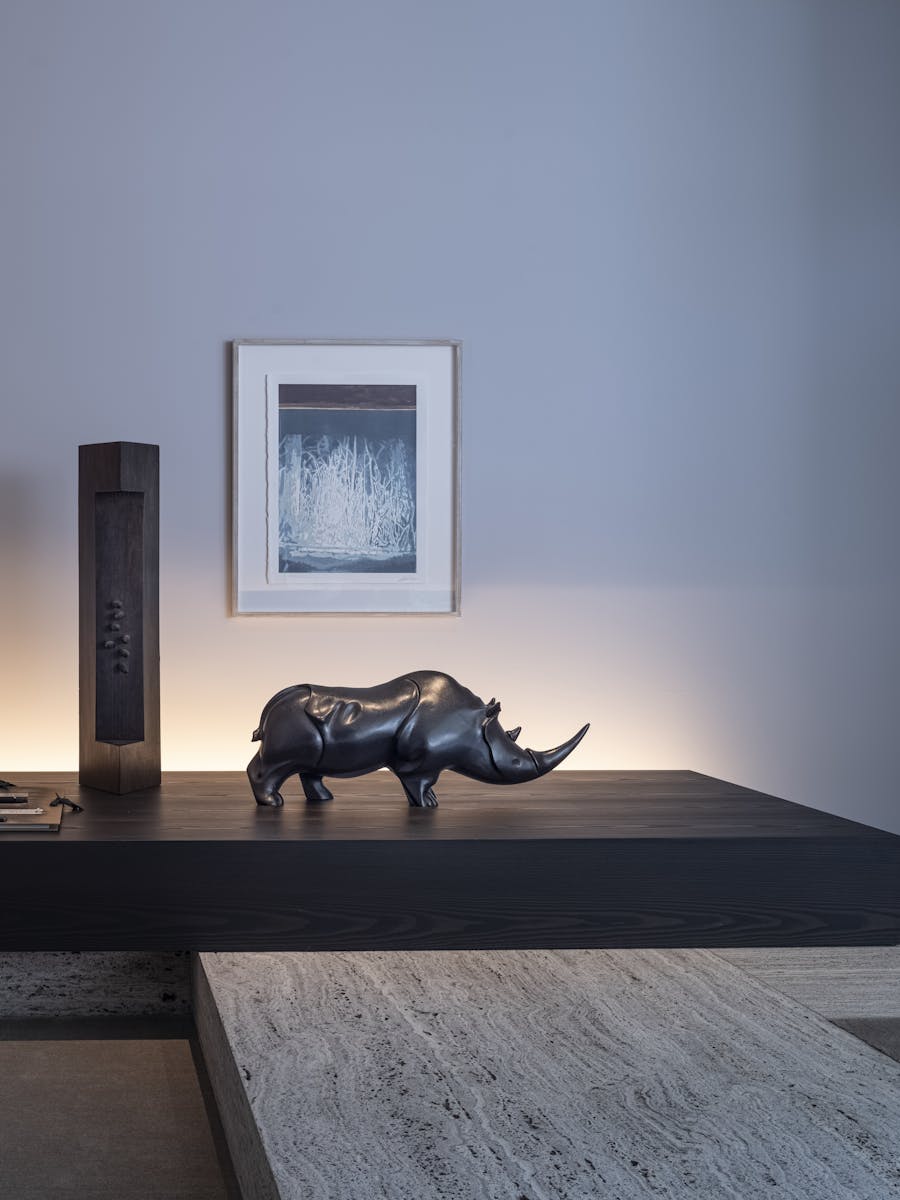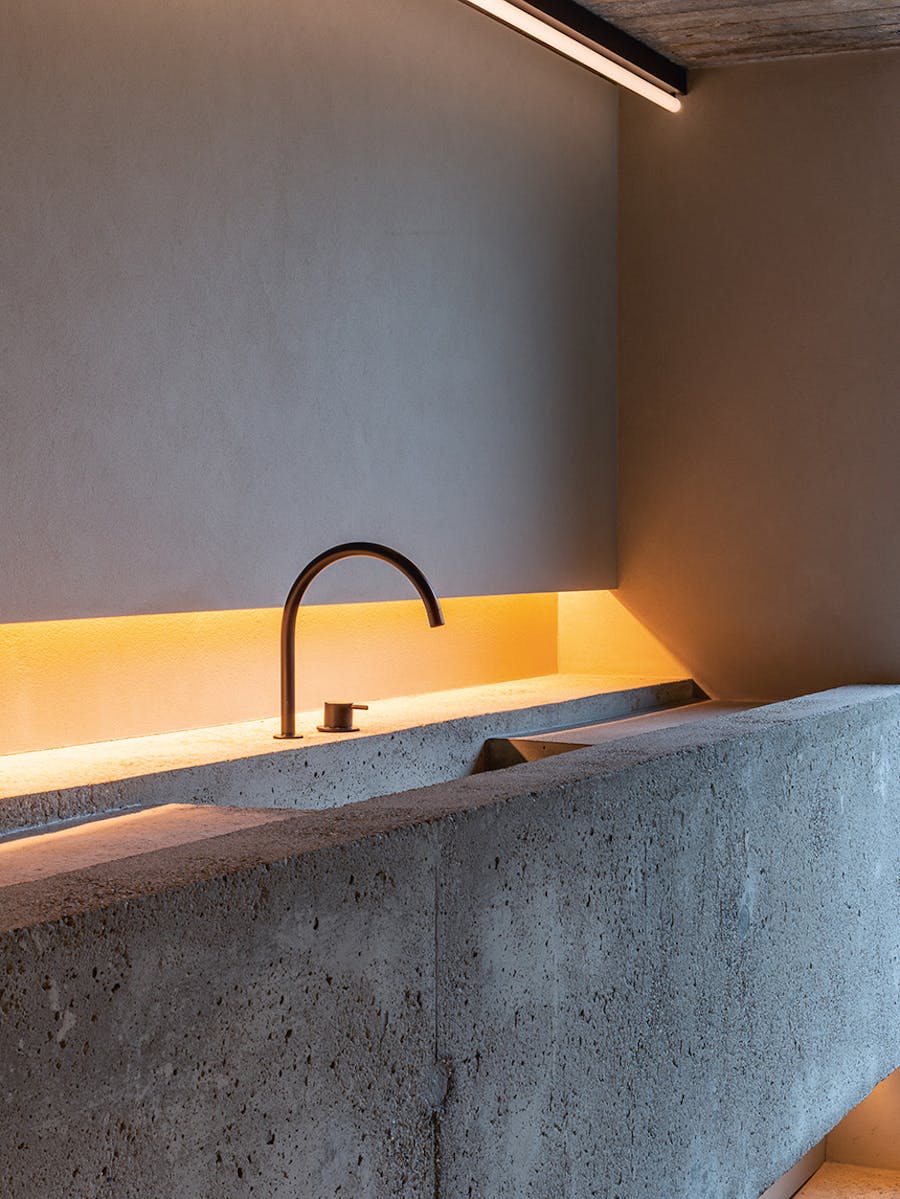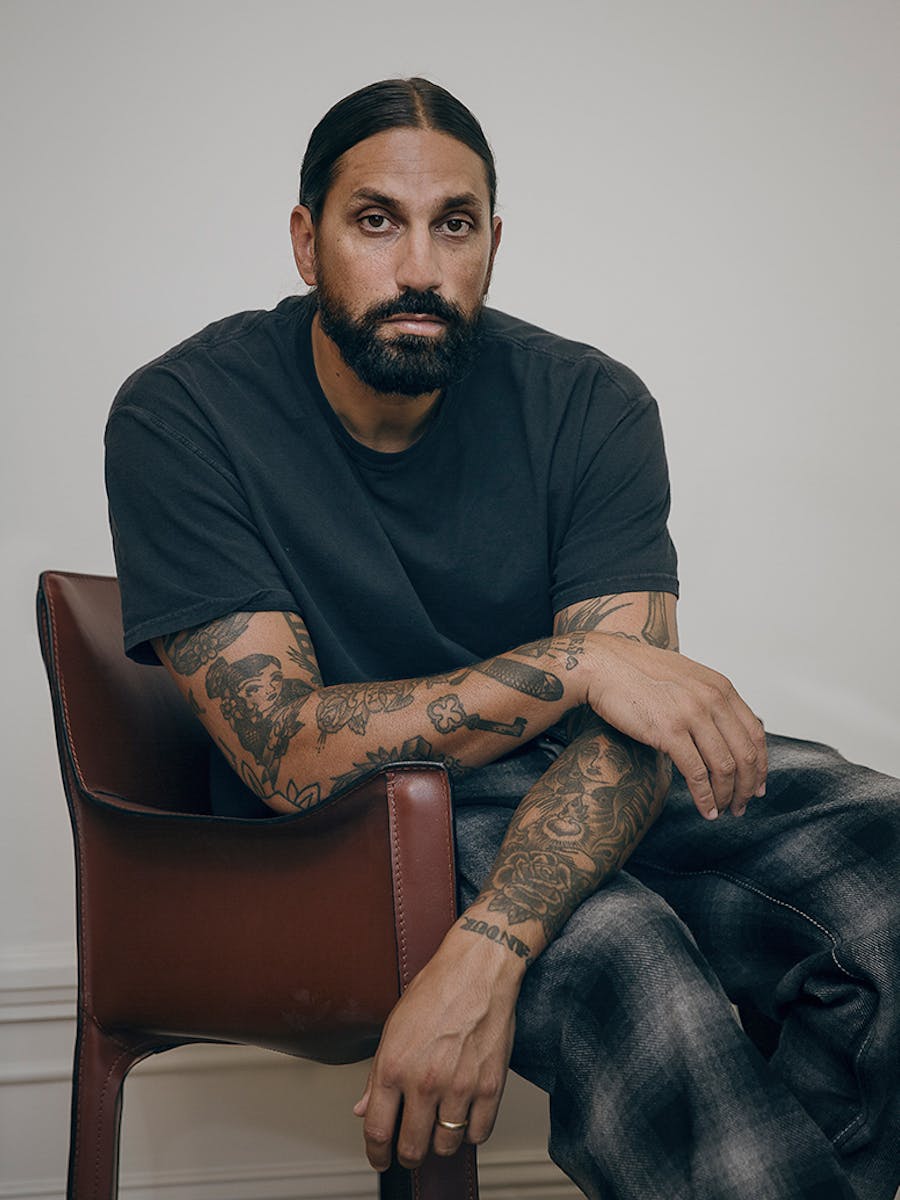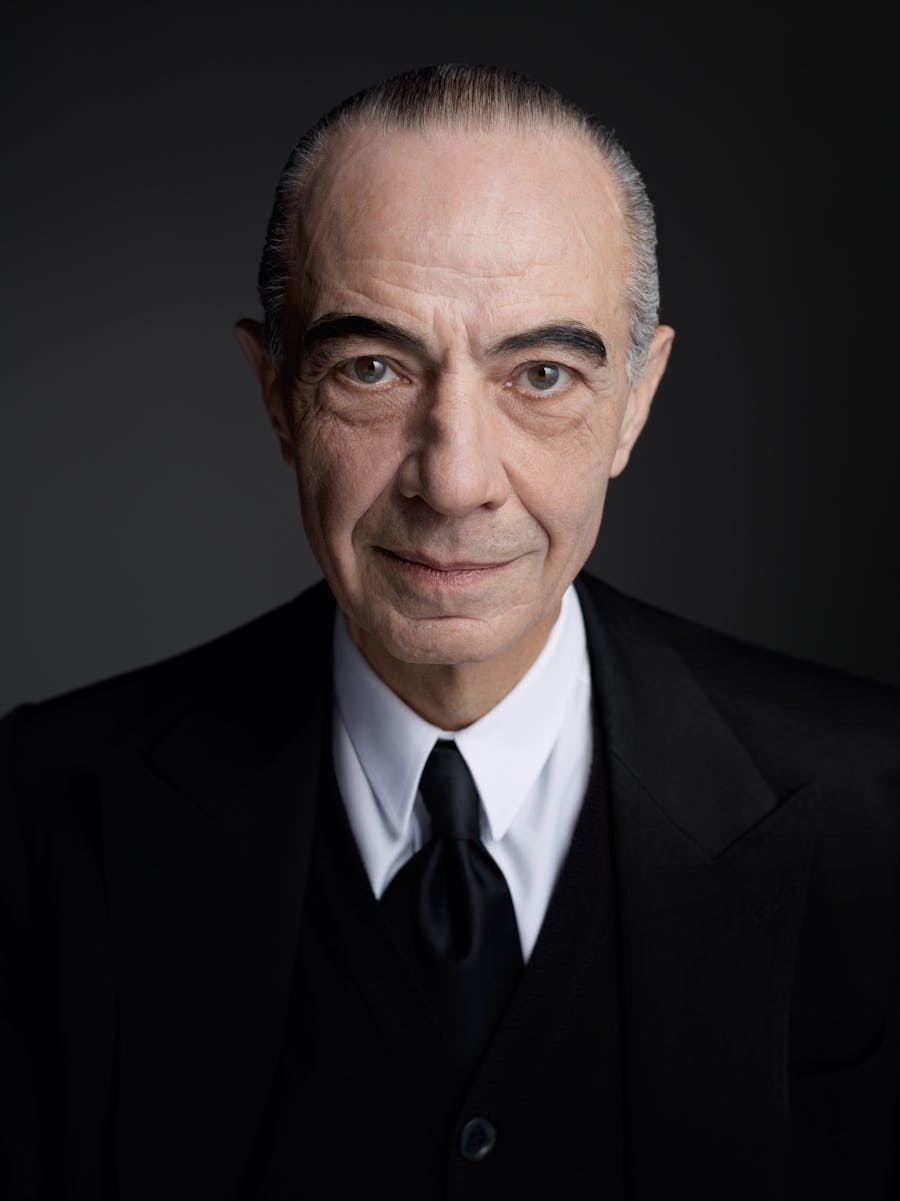From Faces issue
Club Culture, the ‘Anvers 6’ and minimalism welcome to the elegant world of Glenn Sestig.
It is in the Hôtel Costes, just around the corner from the Place Vendôme, that we meet with Glenn Sestig. On the shady terrace designed by Jacques Garcia, the famous Belgian architect orders a coconutmilk cappuccino. After a hot summer, he tells us that he is dreaming of a house with a sea view. In the Balearics, perhaps, in the south, certainly. “In Belgium, it’s more about rain, humidity and green shrubbery”, he smilingly explains. After all, originally from Ghent, he has since his earliest childhood had an intense and emotional connection with places. While he has just completed his latest project, La Réserve, a five-star hotel on the edge of Lake Zegemeer, Glenn Sesig is already getting ready to make his ‘next move’, the next building that will make his heart beat faster.
Destiny: architecture
In 1986, a group of young Belgian stylists drove to London for the British Designer Show. The press – even if they couldn’t quite manage to remember their hardto-pronounce names – were nonetheless taken with their original and conceptual creations, and branded them the ‘Anvers 6’. A legend was born. Nineties’ fashion would never be the same again. It was in this intellectual, creative and cultural ferment that Glenn Sestig arrived in Anvers in 1993. Through a series of “happy” accidents, the young man had had to leave his native Ghent when the public architectural college closed. His father, an atheist, refusing to countenance his son amongst Catholics, preferred to see him enrol at the Institute Henri Van De Velde in that city in Flanders, known for its eclectic architecture, avant-garde creativity and anti-conformist spirit. The town was in the middle of a period of creative stimulation, on the crest of a new wave which would change its face forever.
‘At the time, we were all mixed together at the school, studying photography, fashion, architecture”, he explains. “It was the start of the Anvers 6. I grew up alongside them and their aesthetic always inspired me. The fashion universe always seemed fun to me; I even thought for a while about changing path.” But his mother, once more, advised him to remain faithful to his first love. For at the age of 12 Glenn was already developing an obsession with wellconceived, well-executed spaces. At an age when most of us are still taping posters to the walls of our bedrooms, he was enjoying redoing his entirely to measure. After that, it would be the bathrooms in the family home and his grandparents’ kitchen. His parents, who were “very open minded”, were happy to see their son so enthusiastically go down this route, his passion for which was certainly inherited from his father, a lover of architecture. “My mother also had a real feel for habitat and a minimalist spirit which has really influenced me. Everything had to be aesthetic and functional. I have basically just copied my mother,” he realizes with a burst of laughter. She had predicted it: you will be an architect, my son.
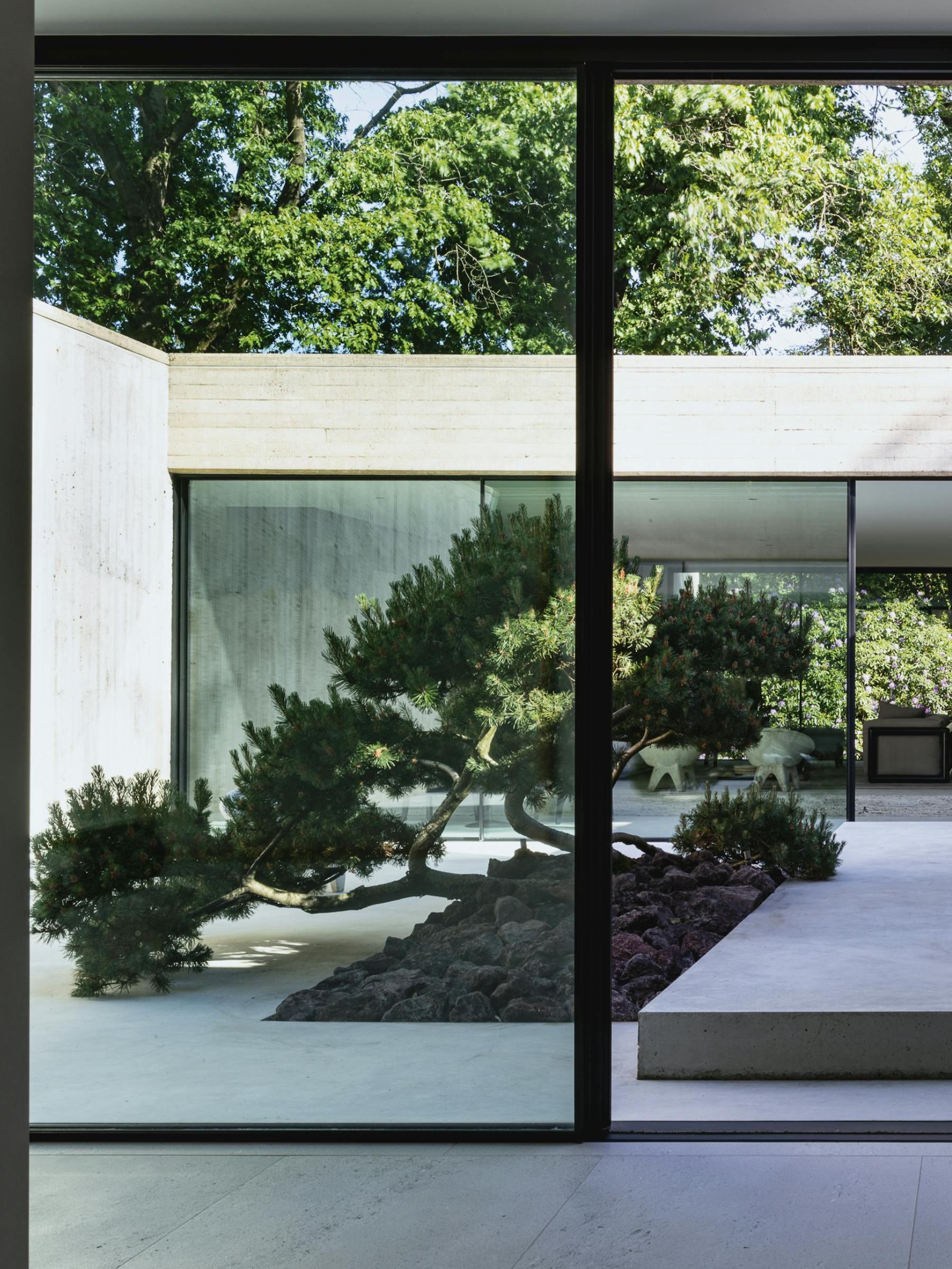

Club culture and banging nights
If Glenn enjoyed studying architecture, it was also at night, in club culture, that he found inspiration. “In the middle of nowhere”, the Flatland of the 90s was the cradle of a vibrant electro scene, welcoming young people from across northern Europe who came to slake their thirst for electro sounds in its clubs. Every Sunday, Glenn and his gang would go to Boccaccio Life, a hangar near Ghent, the capital of Belgian nightlife, among the very first places to play acid house, techno, EBM and new beat, a new genre that had just been created in Belgium. “I wasn’t yet 20 and every Sunday, my mother drove me to Ghent station so that I could get back to Anvers. I pretended to catch the train and as soon as she left, I met up with my friends again to go to Boccaccio, which was just nearby. Then we would all head back to Ghent again in the early hours by car.” In this golden age of Belgian dancefloors, Glenn made some deep friendships and rubbed shoulders with the up-and-coming talent of the fashion and music scenes. “It was also thanks to the night that we met clients and friends with whom we still collaborate today.” Curious about the spaces in which they were occurring, Glenn was interested in the backstage areas of the club: “My best friend, Lucia, was the granddaughter of the owners of Boccaccio, and thanks to her we could go everywhere, and I understood how this sort of establishment functioned.” Behind-the-scenes always in the back of his mind.
A global vision
For Glenn, inspiration comes by chance, thanks to his encounters and peregrinations. Such was certainly the case for the Sestig Pavilion, where he lives with Bernard, his partner and collaborator of over thirty years. Located in the verdant municipality of Deurle, “the mecca of the Flemish art and painting scenes”, the building was completely renovated to become their headquarters and their house. The duo acknowledge their luck in having been able to obtain this modernist jewel, created by Ivan Van Mossevelde, which in the 20th century housed one of the most significant Northern European art collections. Twenty-five years earlier, during a walk in the countryside around Ghent, Glenn and Bernard discovered this building with which they immediately fell in love. Faithful to his instinct, Glenn crossed the garden and introduced himself to the owners, who refused him access. That was that. But a few years later, while they were just wrapping up work on their house, Glenn took a call from Sabato Magazine informing him that the house was for sale. “Nothing in life happens by accident”, smiles Glenn. “In 48 hours we had closed the deal.”
Glenn is an architect, but also an interior designer”, Bernard clarifies. “He is seen as a classic architect, in the tradition of the great names of the last century, in the sense that he always imagines the totality of a space, down to the tiniest detail.” So what is the Glenn Sestig signature? A minimalist style, refined and modernist; a playful attitude to perspective and reflections; exclusive materials and a pronounced taste for brutalism. Glenn’s buildings are works of nuance, nourished by deep reflection on functionality and an extreme precision that has won him many eminent admirers. From Raf Simons to Pieter Mulier, via Luc Tuymans and Nick Vinson, Glenn imagines spaces for the leading lights of contemporary design. “It is very important to work with people who inhabit worlds close to mine. I work intuitively, I speak with my clients to understand who they are and what they like. I dive into their worlds and then I translate their desires according to my tastes.” His CV is nonetheless dotted with eclectic projects.
In the 2000s, he also founded Culture Club in Ghent, which he divided into two rooms with different ambiances – one techno, one R&B – linked by an arrangement of mirrors. “You could see people dancing to a different music from the one you were listening to, it was really fun”, Bernard remembers. “The club was a huge success. One day the whole Michel Gaubert/Colette set came down – they’d taken over a whole train to come for the night.” Once again, Belgium was the rendezvous for Paris’s smart set. From the spectacular Mulier Penthouse with its sleek geometric lines, lodged at the top of Anvers’s Riverside Tower, to the private Tuymans-Arocha Gallery, via la maison 23, Glenn is sometimes managing 30 projects simultaneously. “I like to go from one project to another, I get bored quickly. But we don’t only do exclusive or luxury collaborations, sometimes we also get involved in projects led by young people who inspire us.” One example of the latter is ‘The Bakery’ by Joost Arijs, in Ghent. The top chocolatier was lucky enough to have the architect come up with the functionalist and minimalist design largely lauded by the press. “This dialogue with the next generation seems very important to us. I think you have to remain very open to the world”, Glenn concludes with a smile
